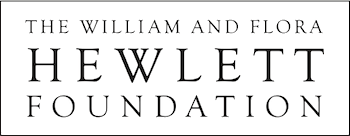Browse Activities
Molecule Polarity- Inquiry and Applications

- Clicker_questions_molecule_polarity_1.pdf - 227 kB
- Clicker_questions_molecule_polarity_1.pptx - 271 kB
- Molecule_Polarity_1_Lesson_plan.docx - 22 kB
- Molecule_Polarity_1_Lesson_plan.pdf - 112 kB
- Molecule_Polarity_1_student_directions.docx - 39 kB
- Molecule_Polarity_1_student_directions.pdf - 137 kB
| Title | Molecule Polarity- Inquiry and Applications |
| Description | This was used in class or as a homework depending on the class schedule.The students worked with Build a Molecule and Molecule Shapes before this. Learning Goals: Students will be able to: •Define bond polarity and molecular polarity •Explain the relationships between bond polarity and molecular polarity •Identify tools/representations to approximate bond and molecular polarity Use these common tools to approximate and compare polarity • Use standard notation to indicate polarity •Identify the bonds between atoms as nonpolar covalent, moderately polar covalent, very polar covalent, or ionic. |
| Subject | Chemistry |
| Level | High School, Undergrad - Intro |
| Type | Concept Questions, Homework, Lab |
| Answers Included | No |
| Language | English |
| Keywords | bonding, covalent, dipole, ionic, molecules, nomenclature, phet |
| Simulation(s) | Molecule Polarity |
| Author(s) | Trish Loeblein |
| Contact Email | patricia.loeblein@colorado.edu |
| School / Organization | PhET |
| Date submitted | 10/23/11 |
| Date updated | 10/23/11 |
Comments
Hi, I found this activity an excellent way to help my undergraduate students to apply basic concepts of electrostatics to dipolar interactions, very relevant in biological phenomena. However, I felt dissapointed when I noticed that the convention adopted for the direction of the dipole moment is the old one (from positive to negative charge). Please notice that IUPAC indicates the opposite direction (http://goldbook.iupac.org/E01929.html).
I regret I cannot use such a good material with my students, in order to avoid confusions. Please consider to correct this material. Thank you for your support to learning. Yours, Ana M Gennaro
Ana M Gennaro
8/6/14
Ana, Thanks for your recommendation. I wrote this activity, but I did not write the sim. Perhaps this provides an opportunity for you to discuss with your students how scientific models change. My textbook still aligns with the direction used in the sim; I may show students your comment and help them know that conventions do change and that published material does not always keep up.
Trish
8/22/14





